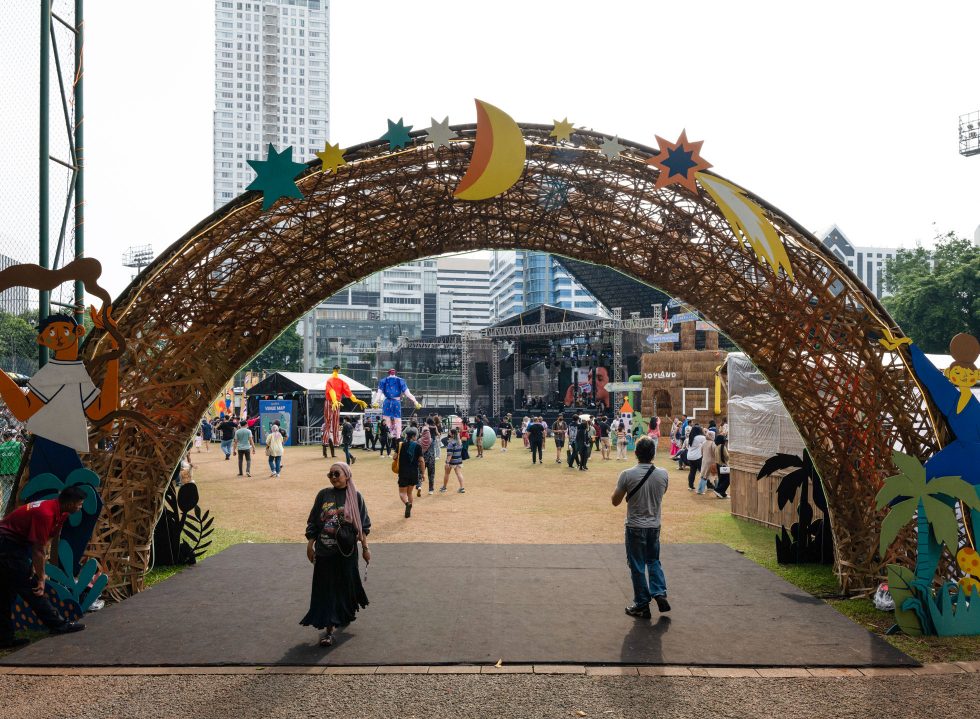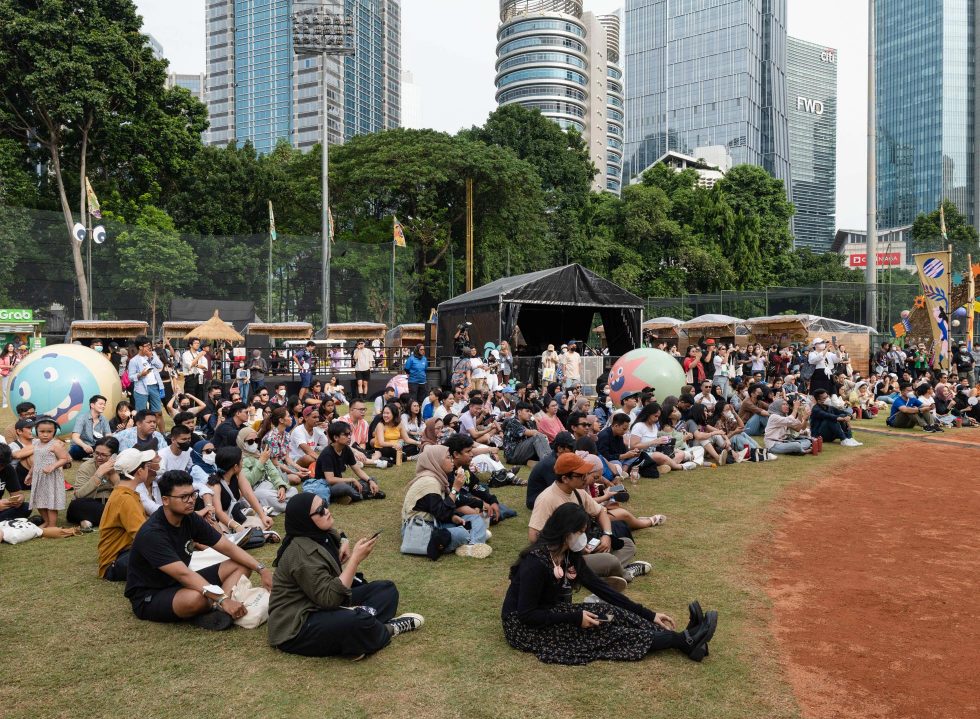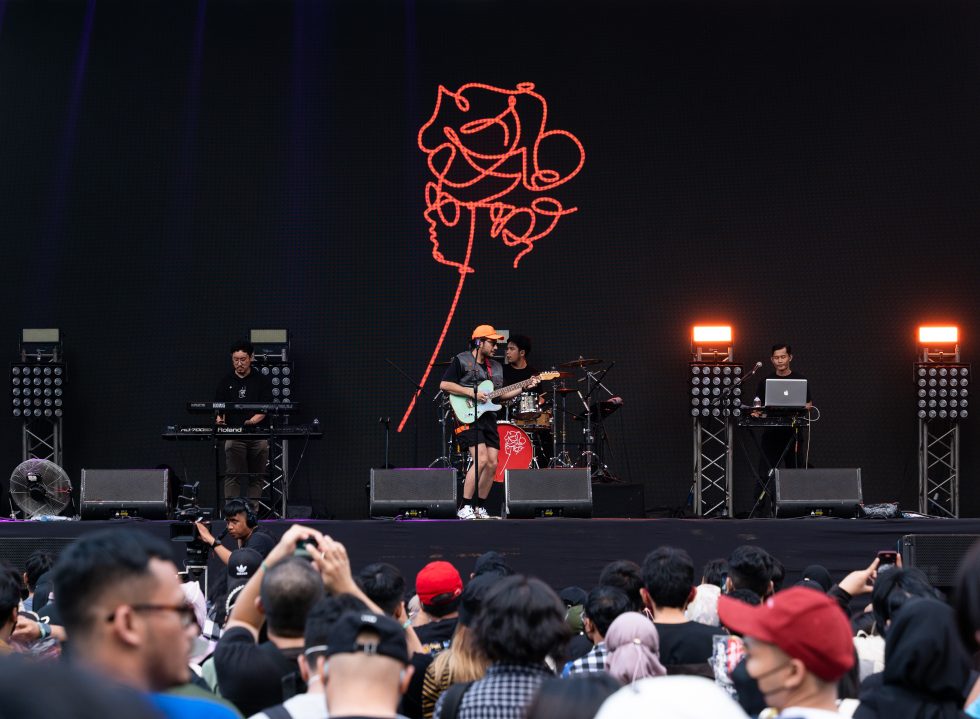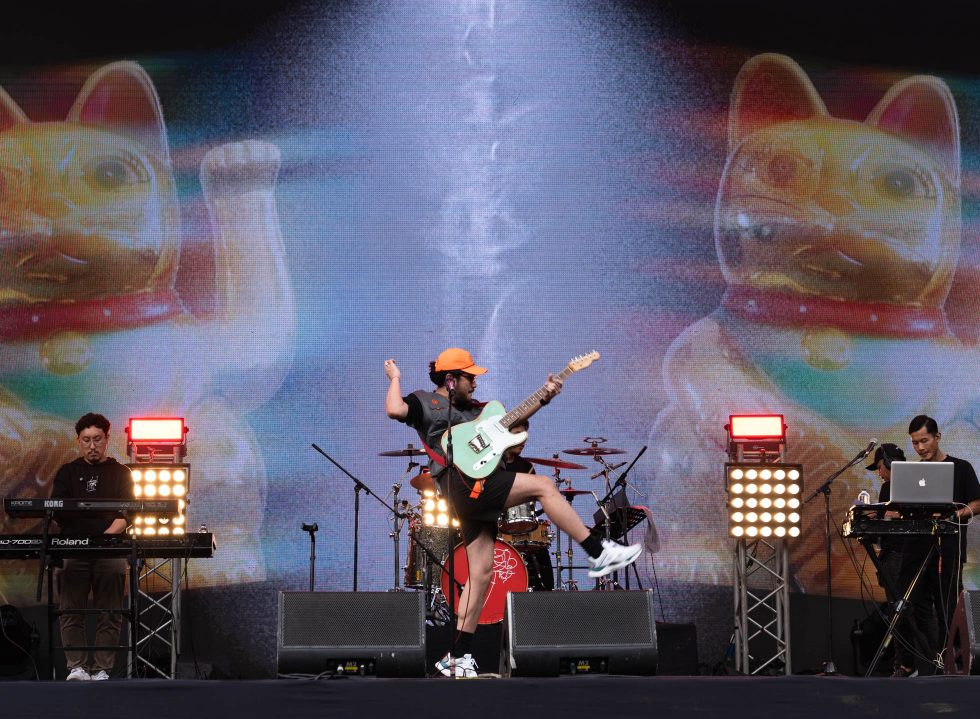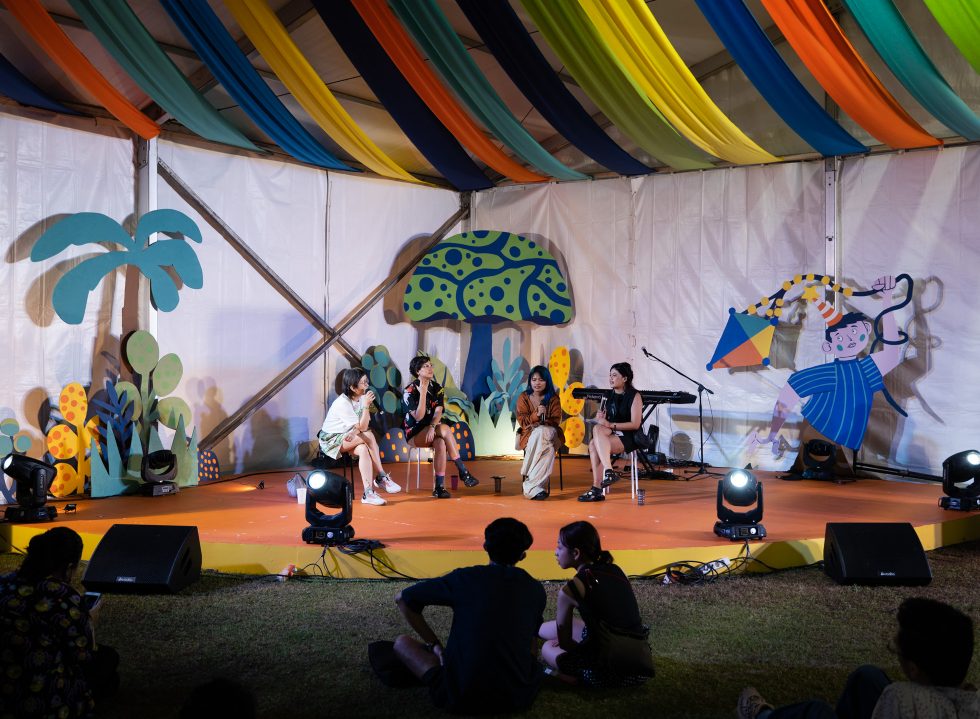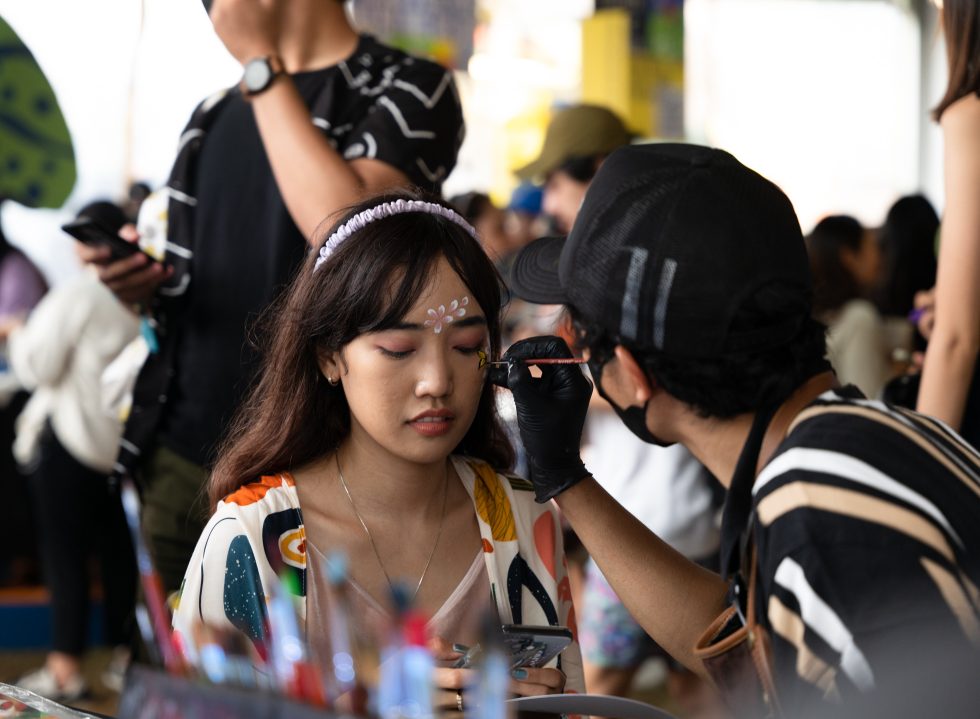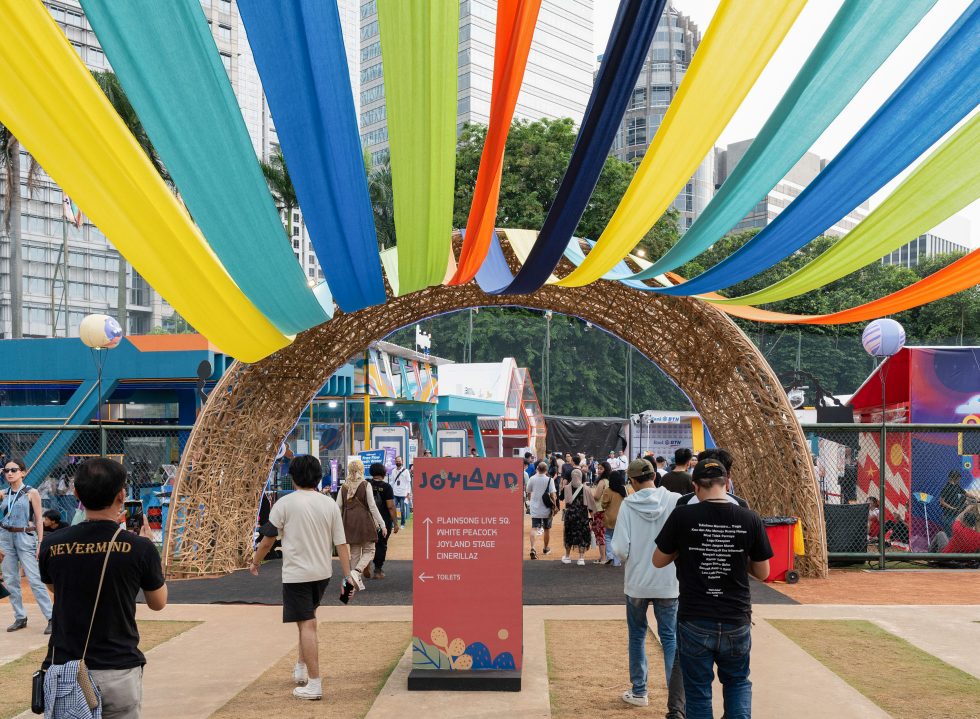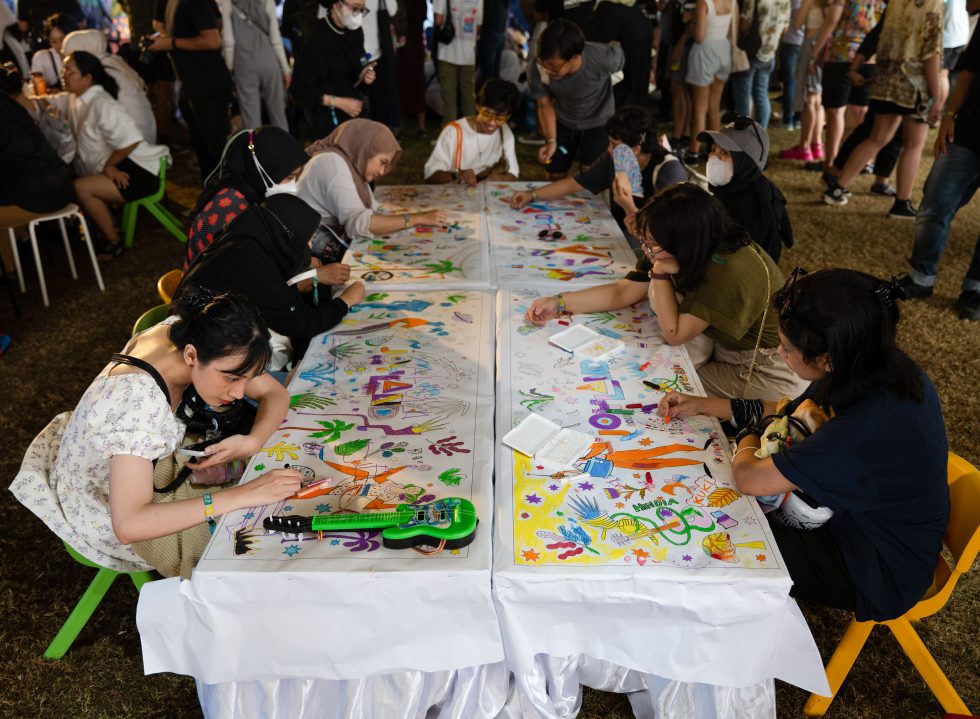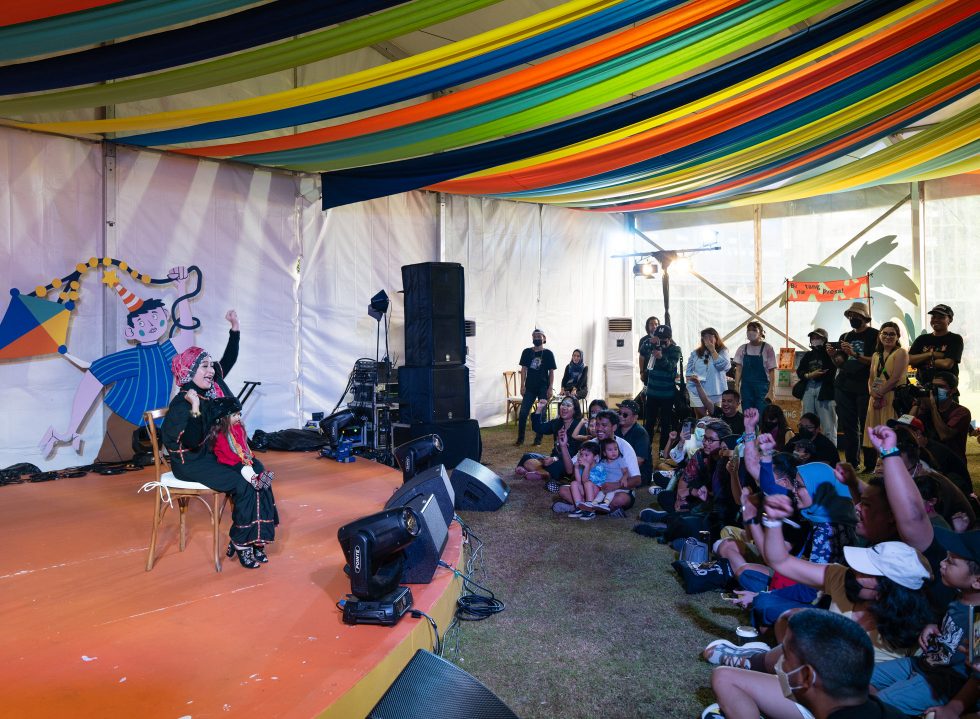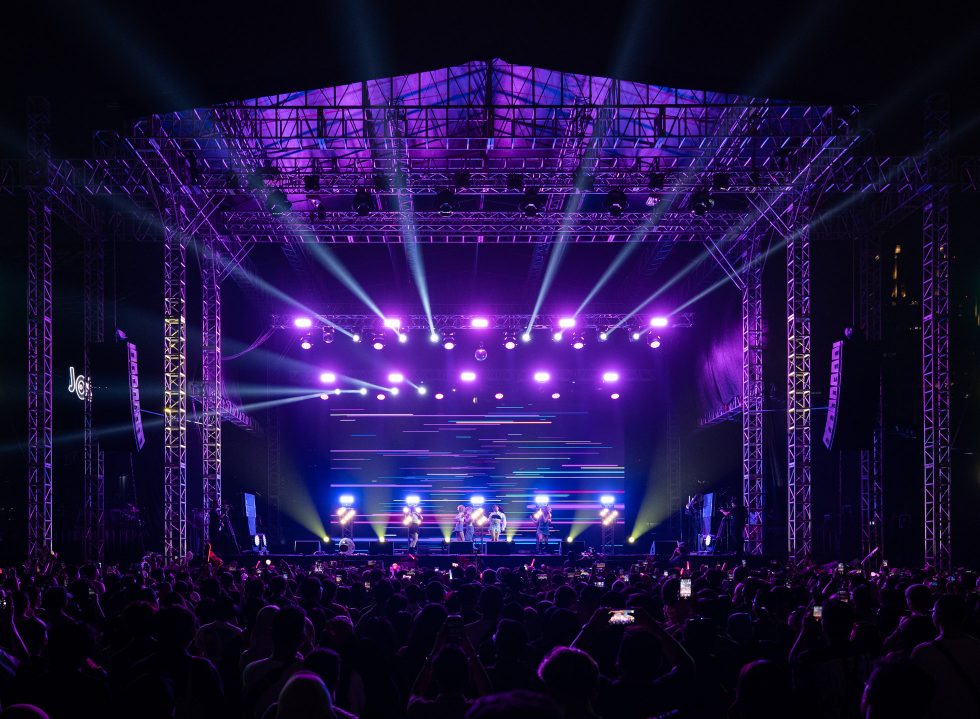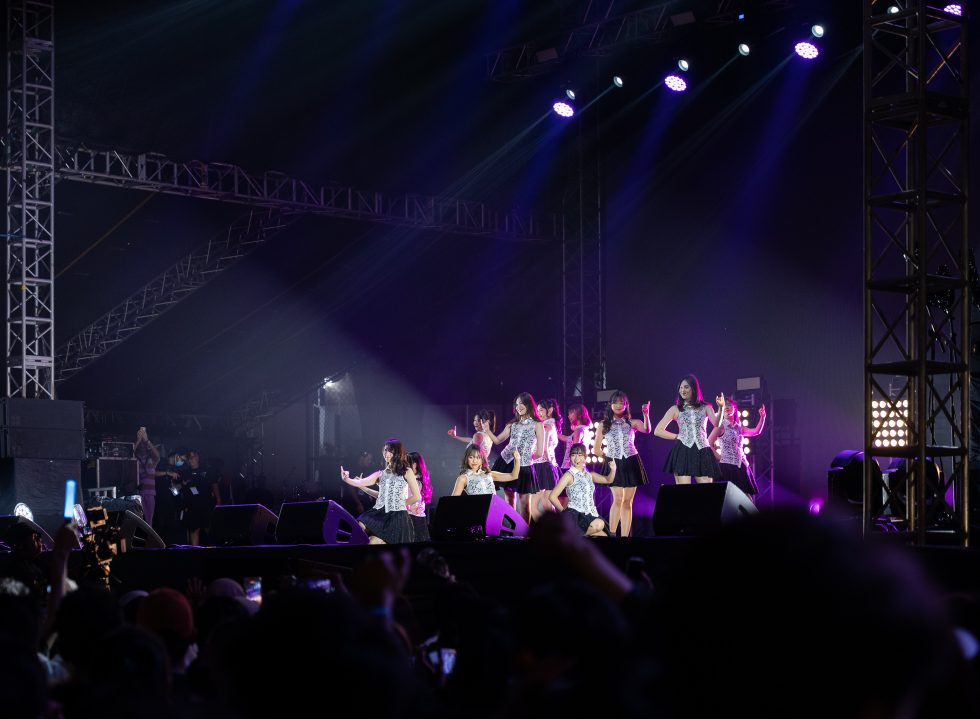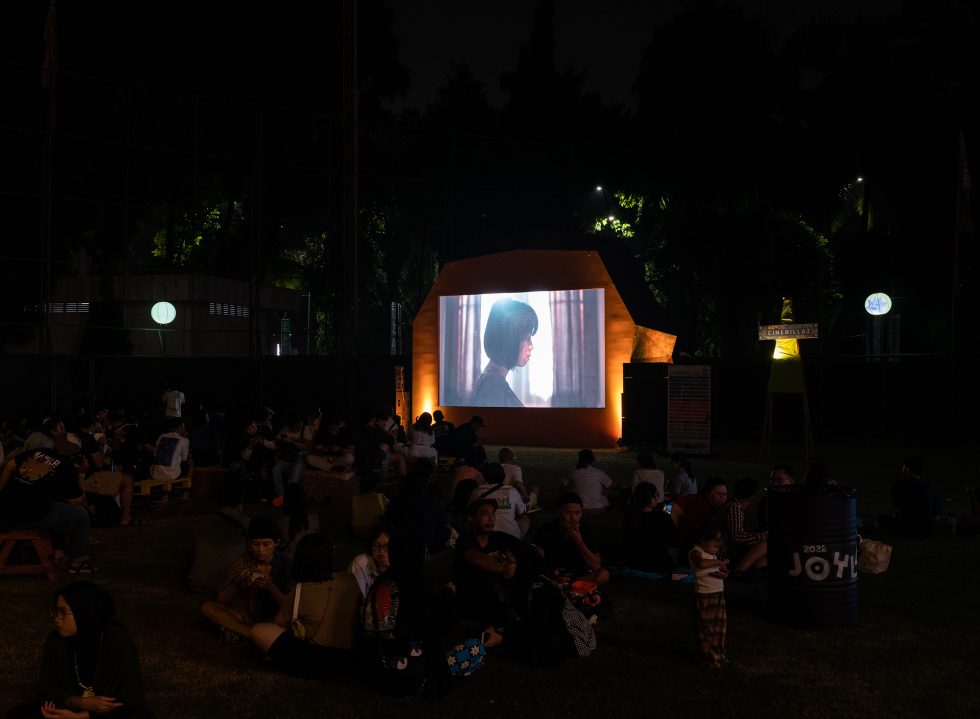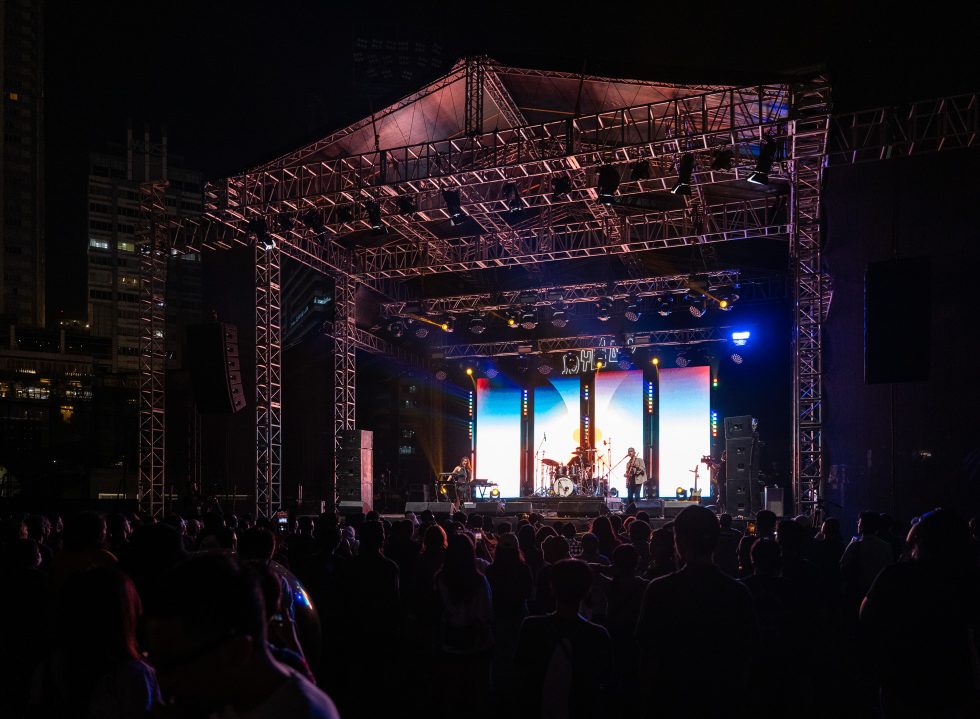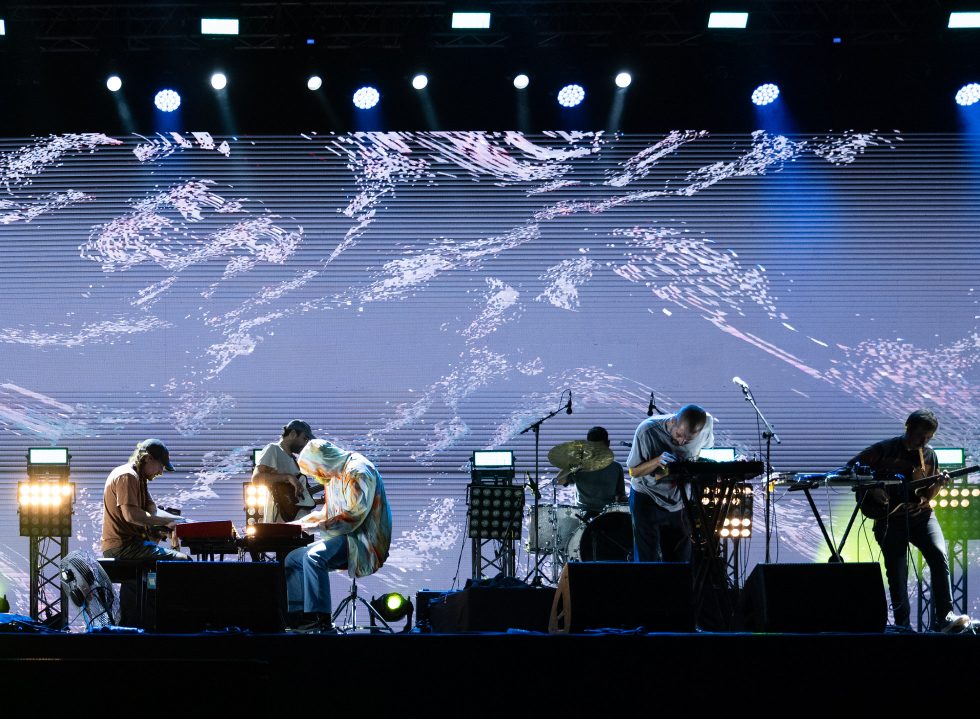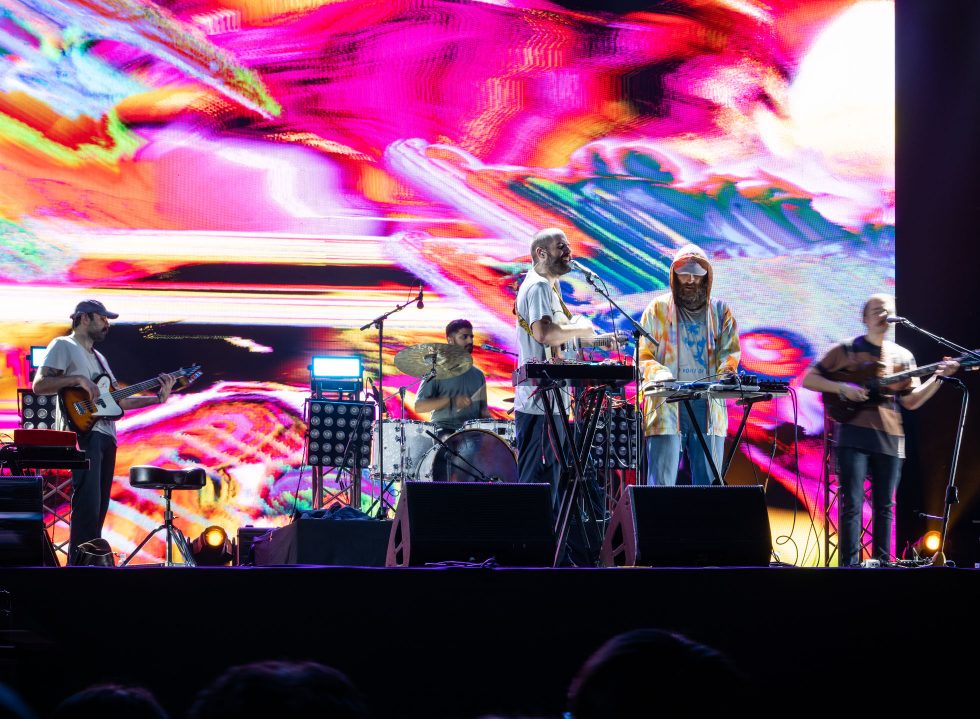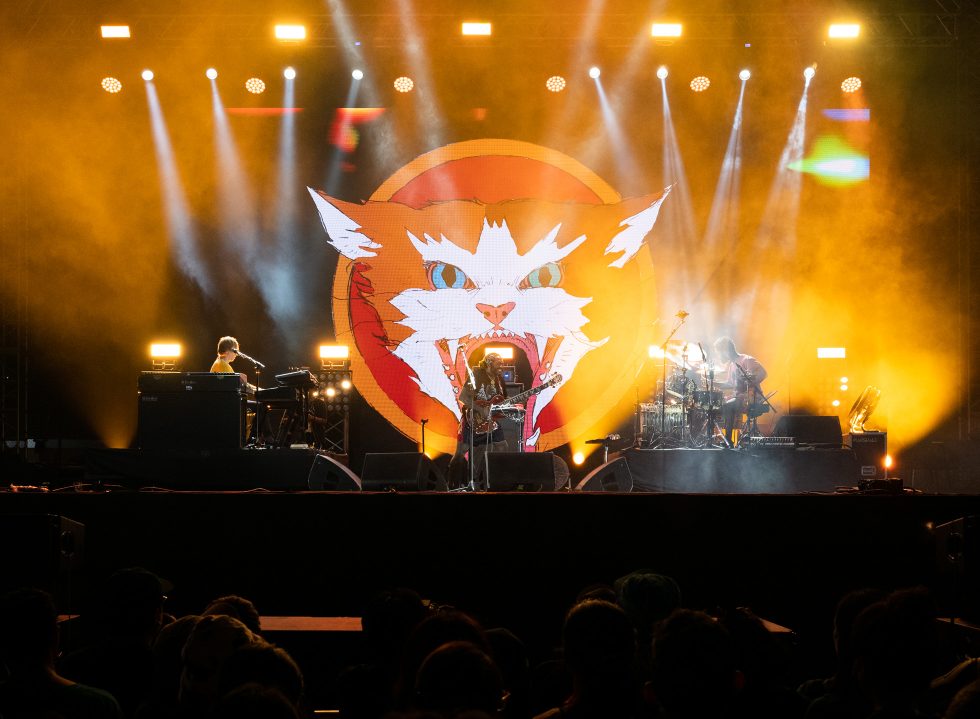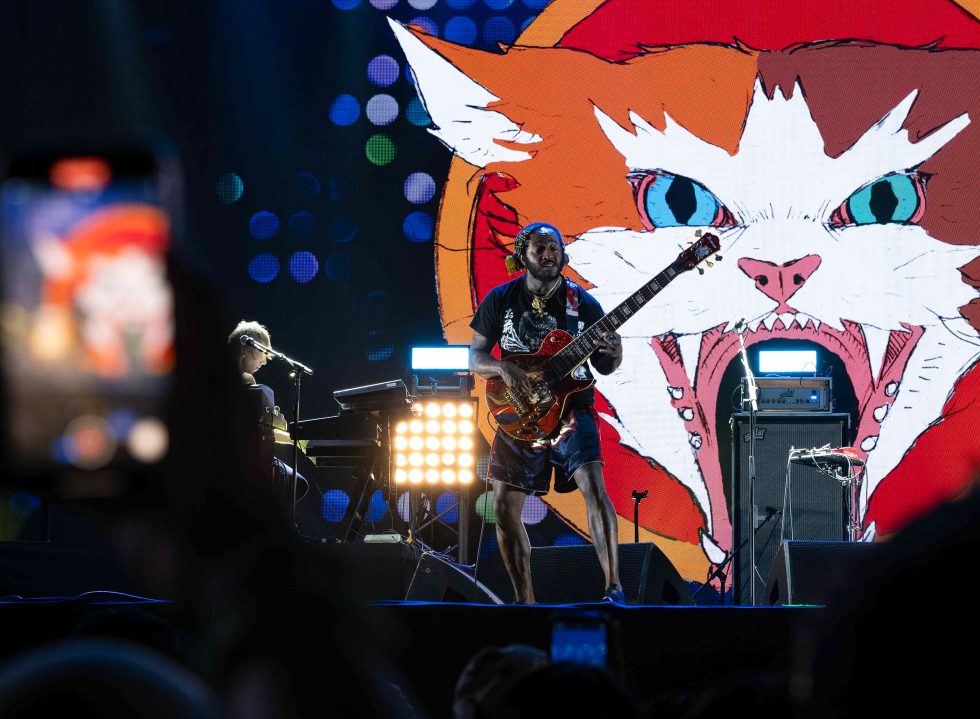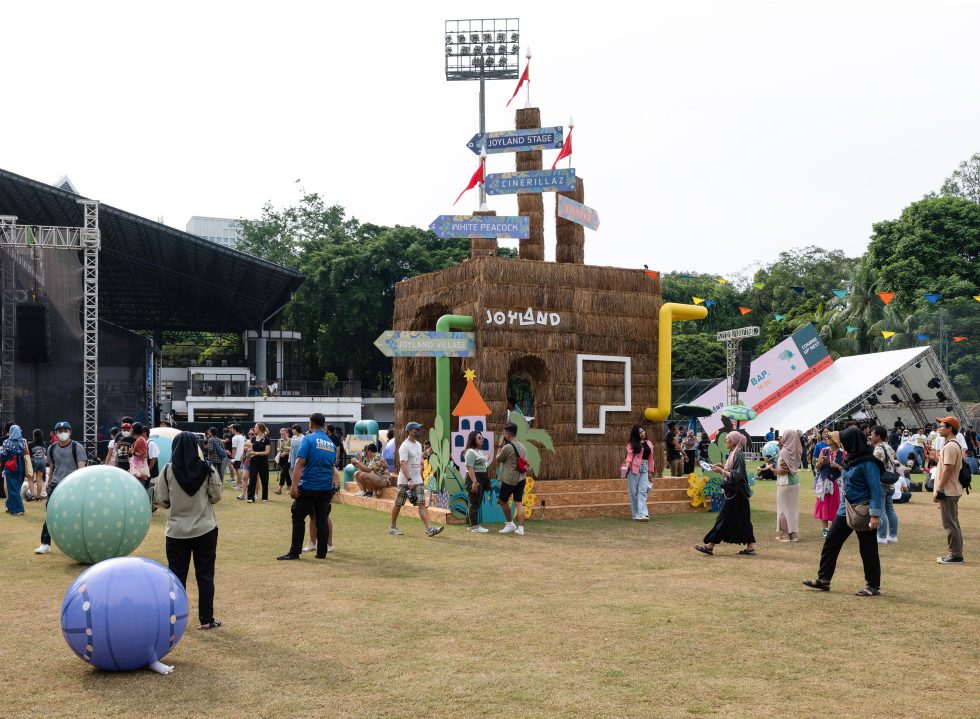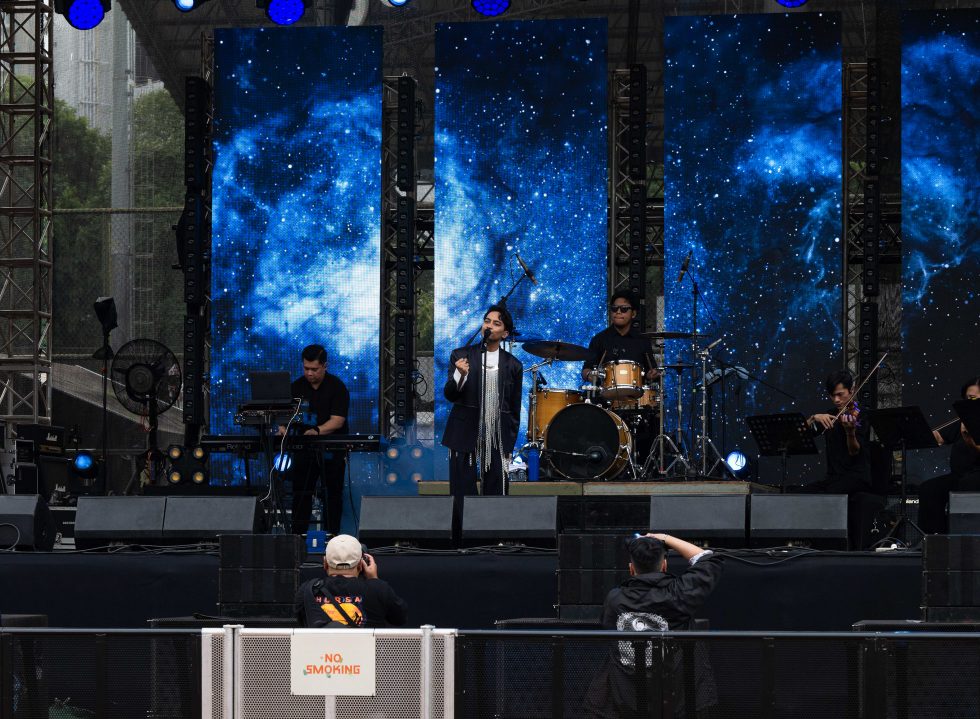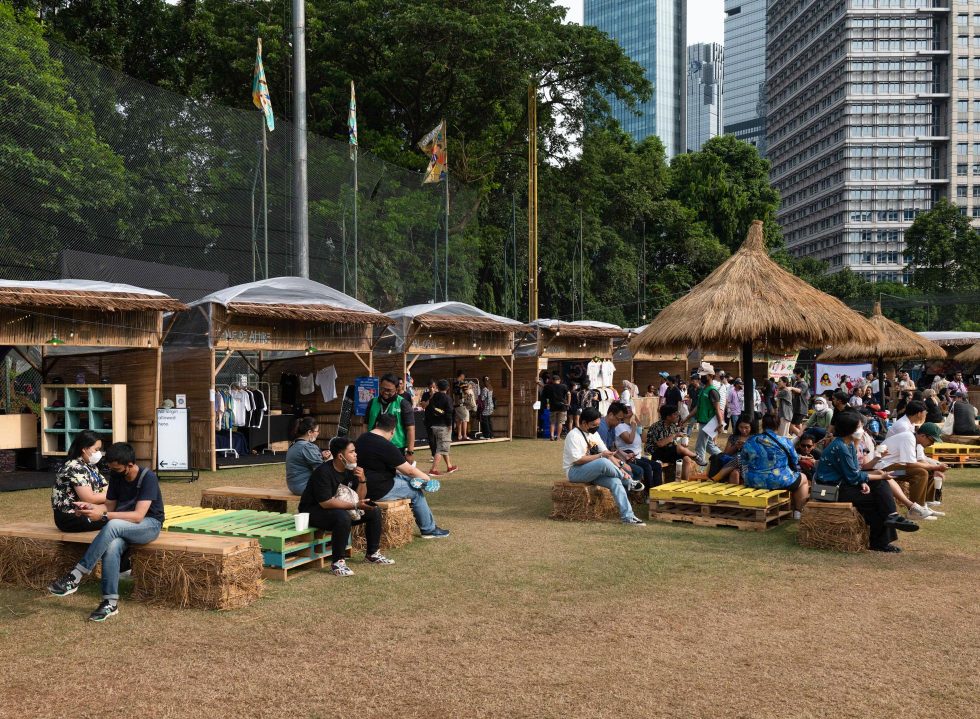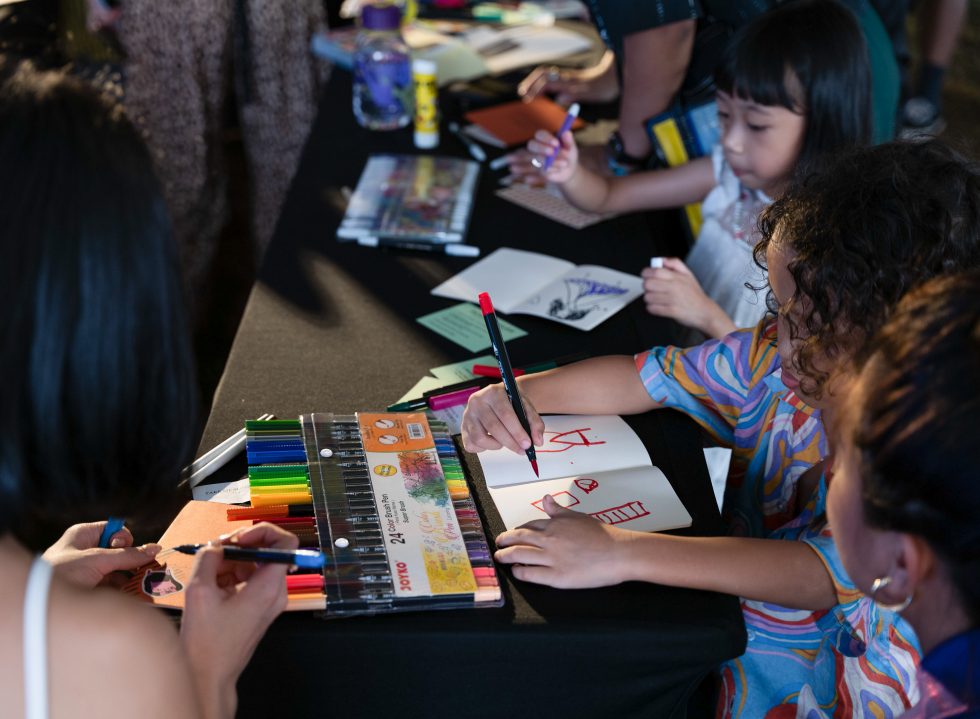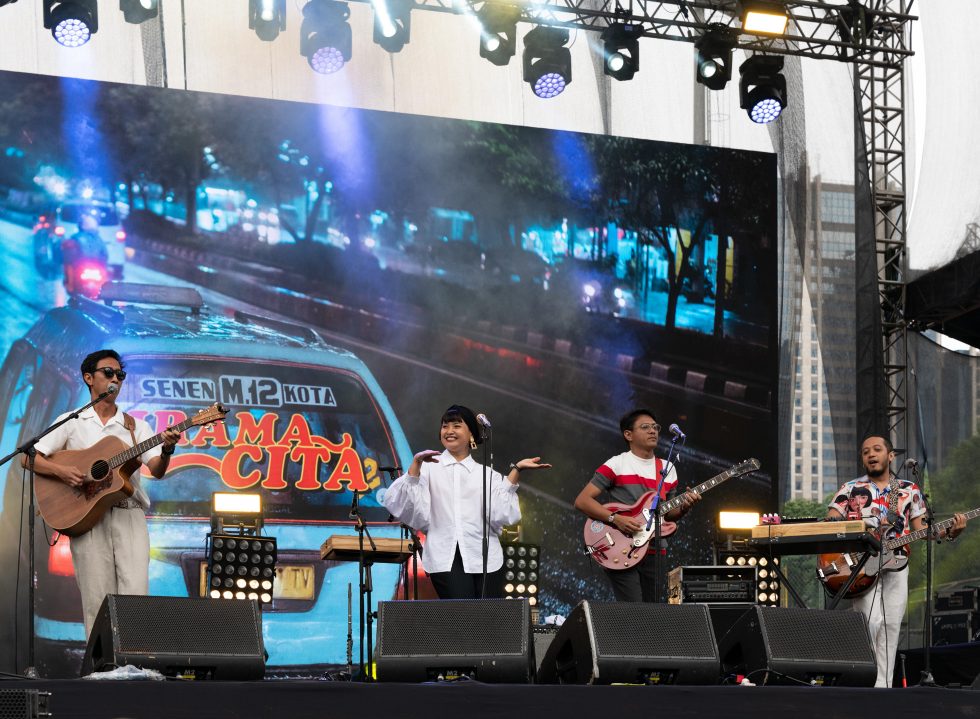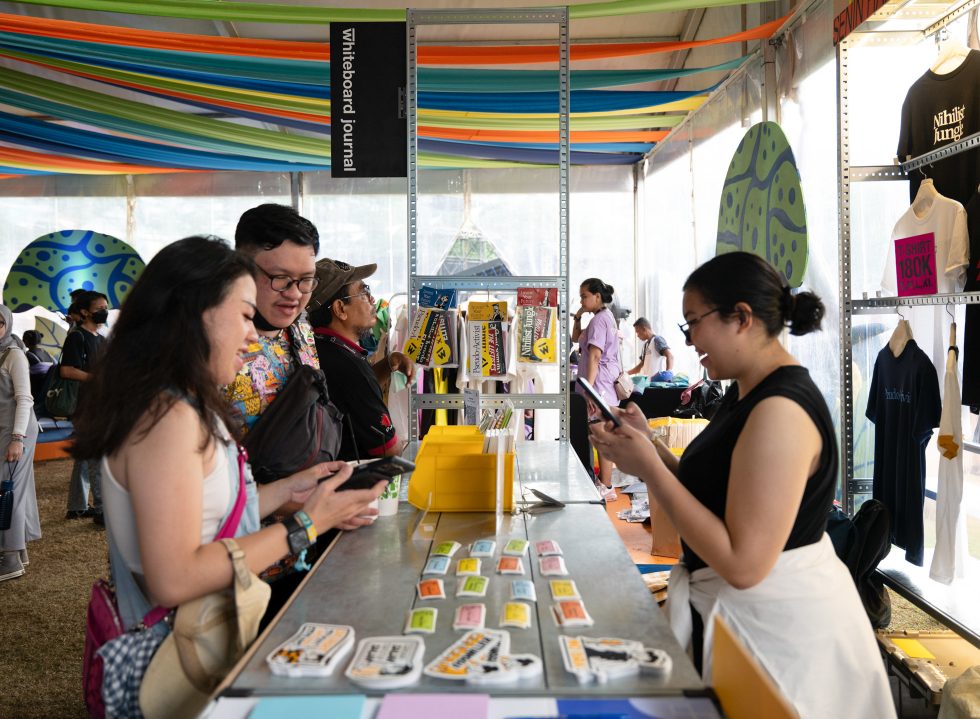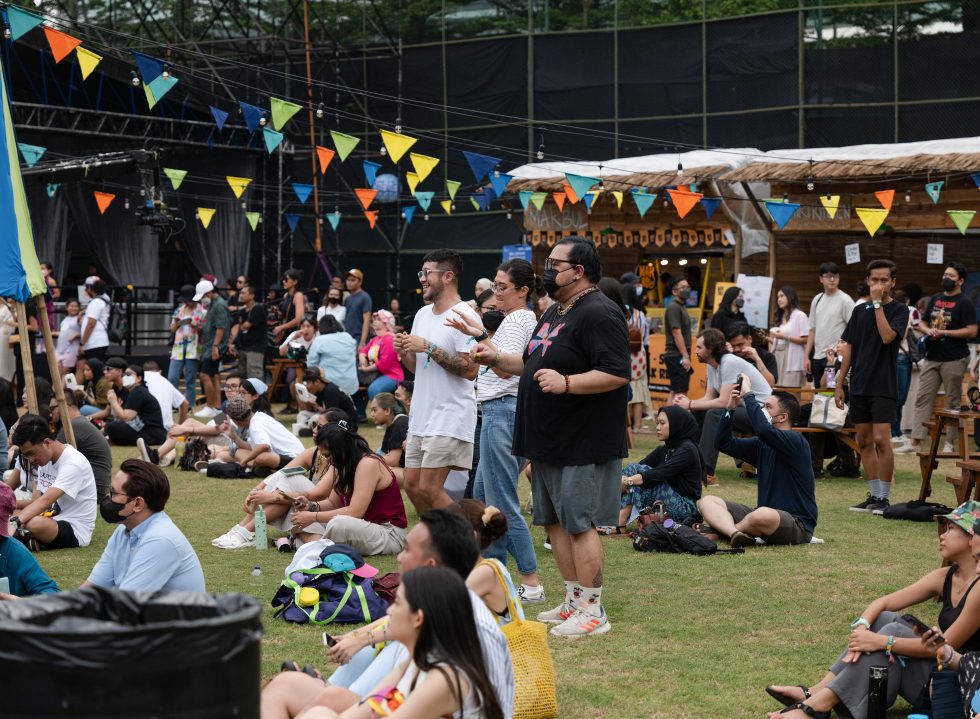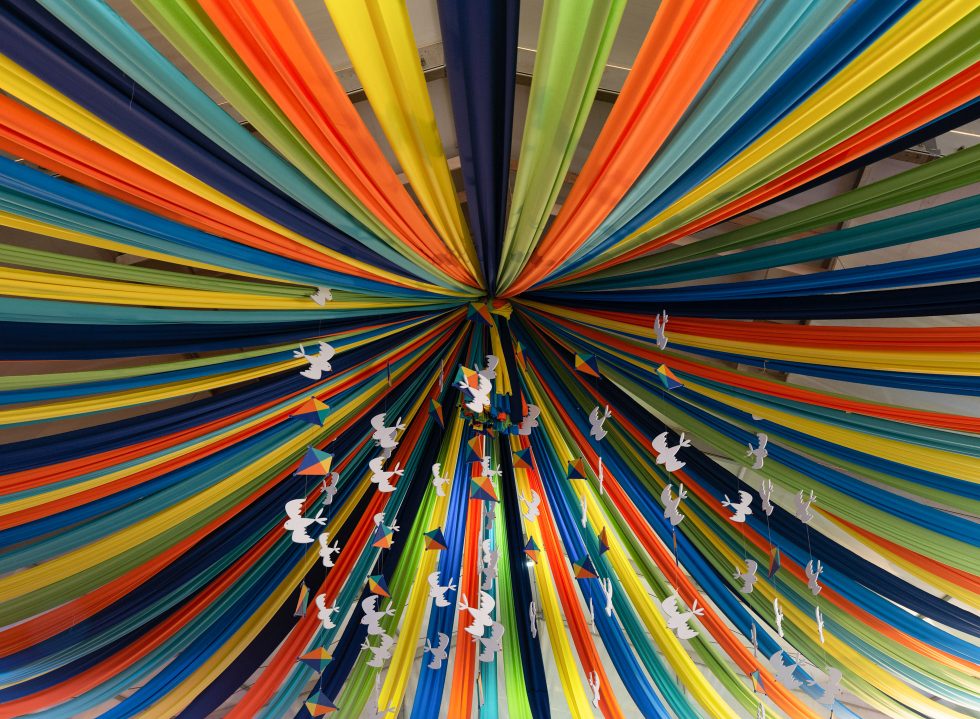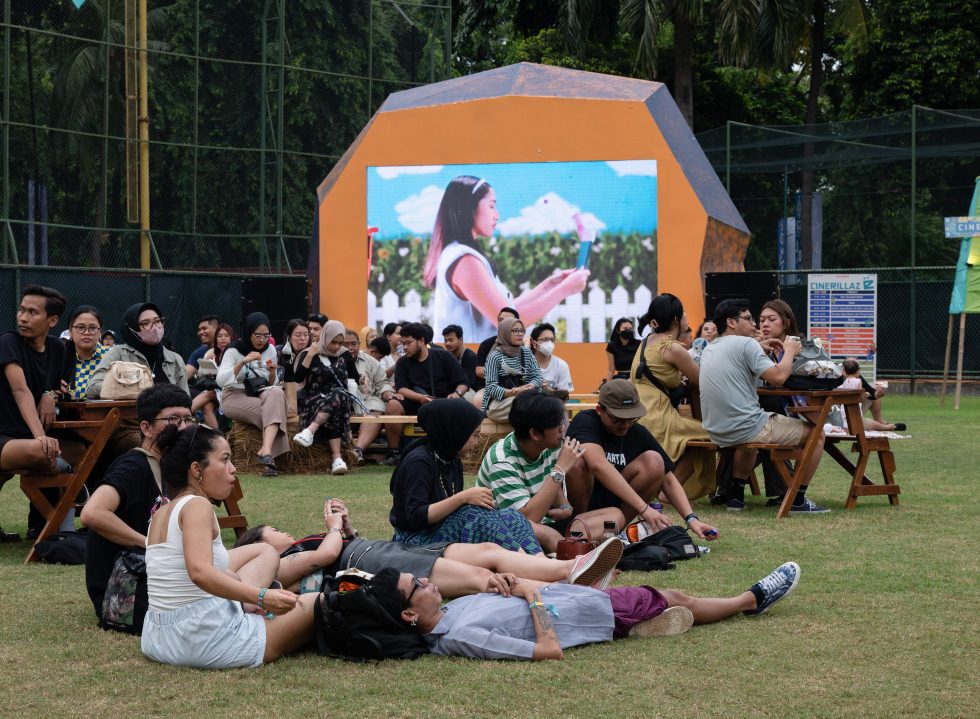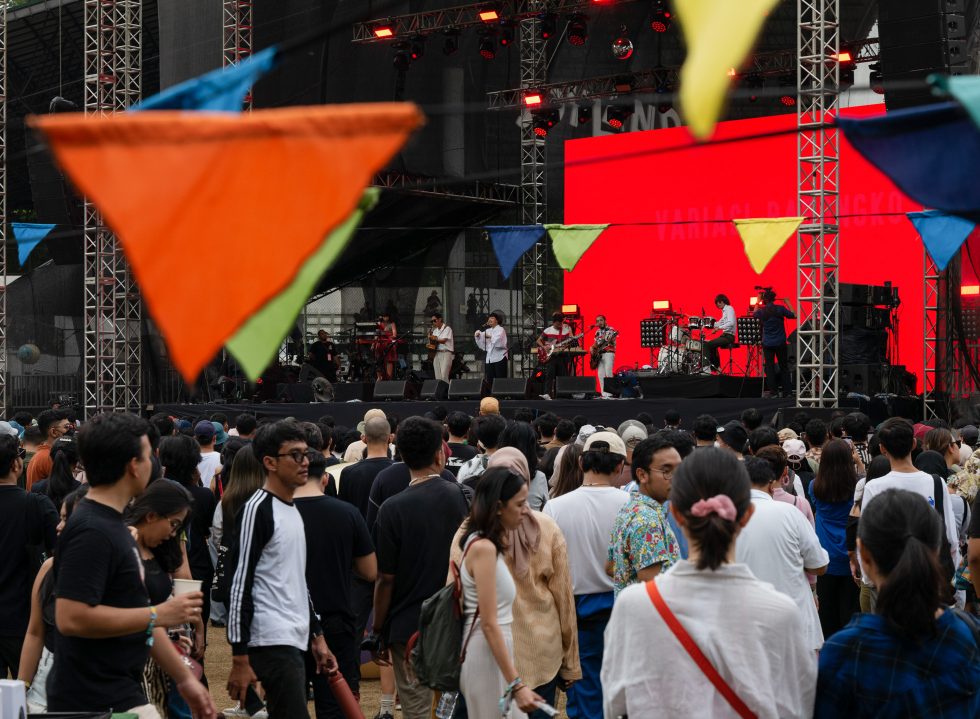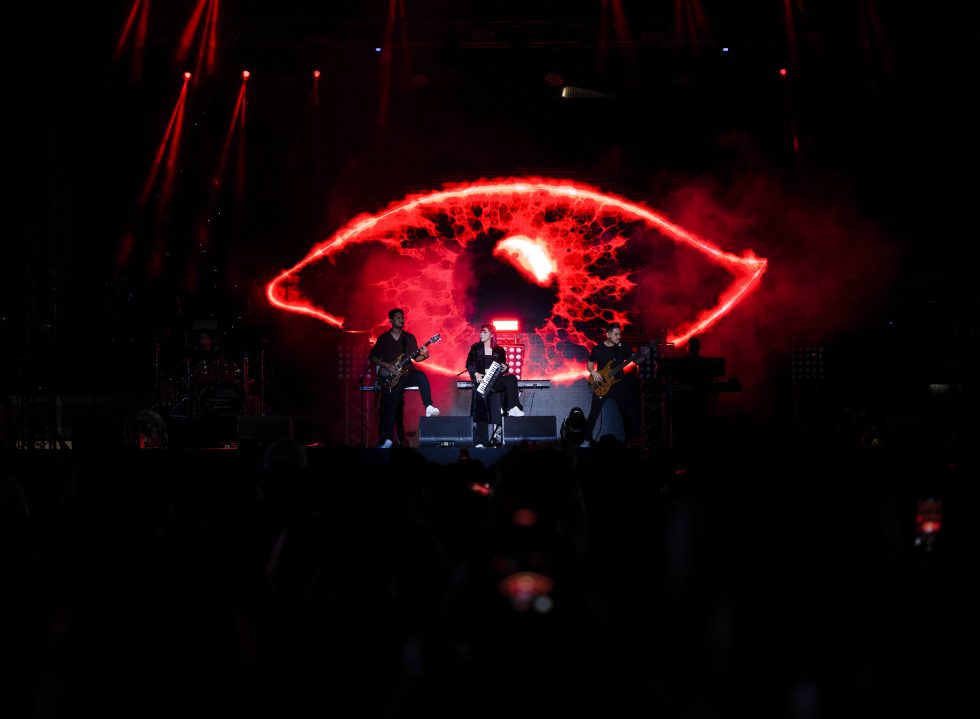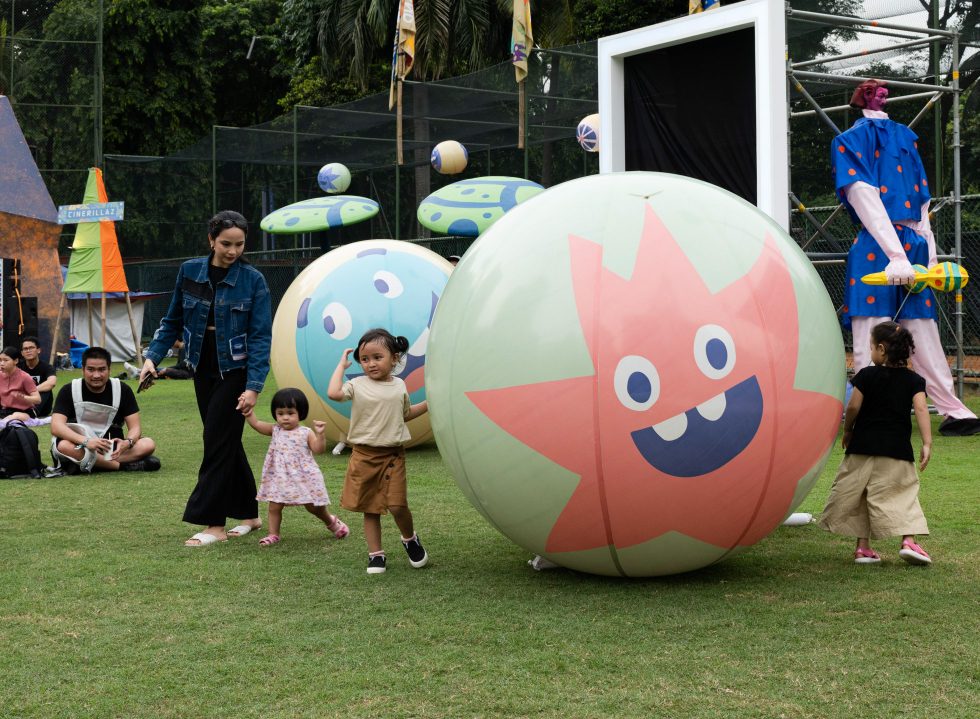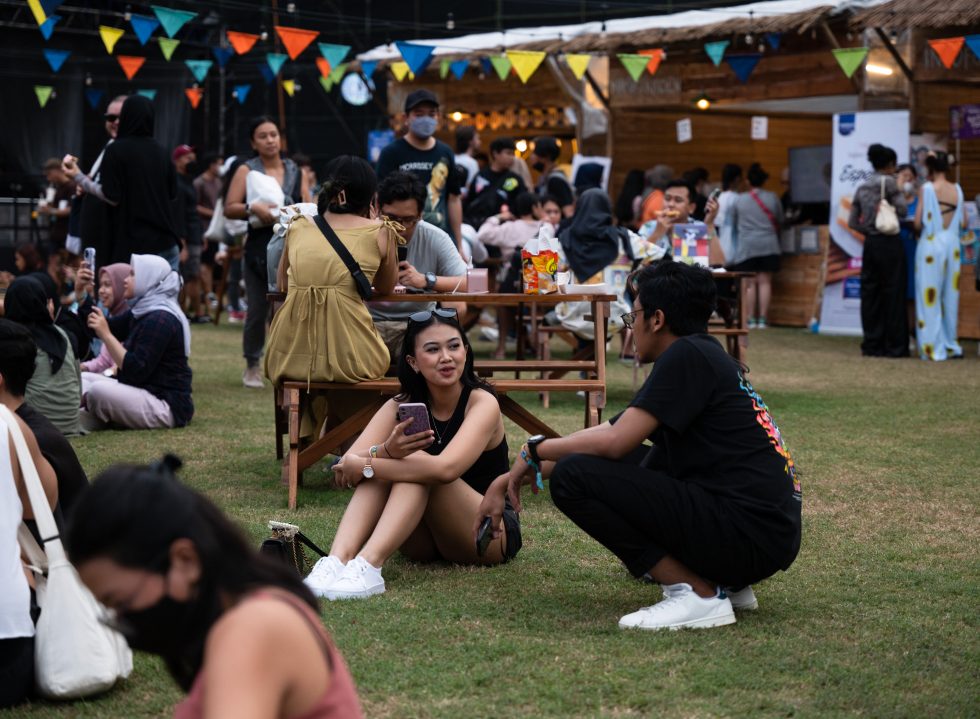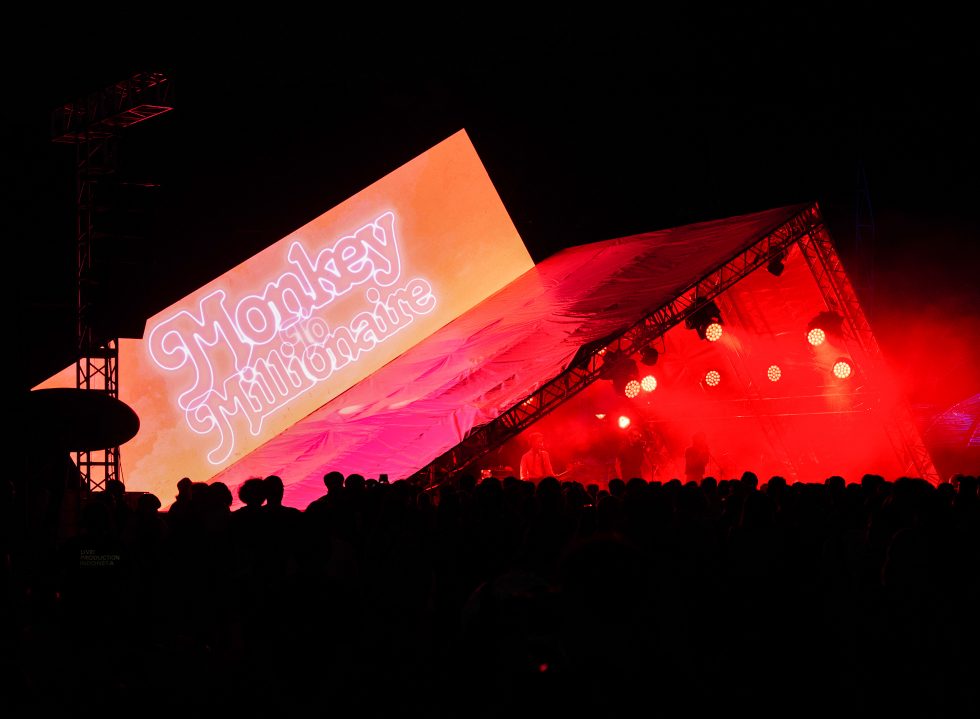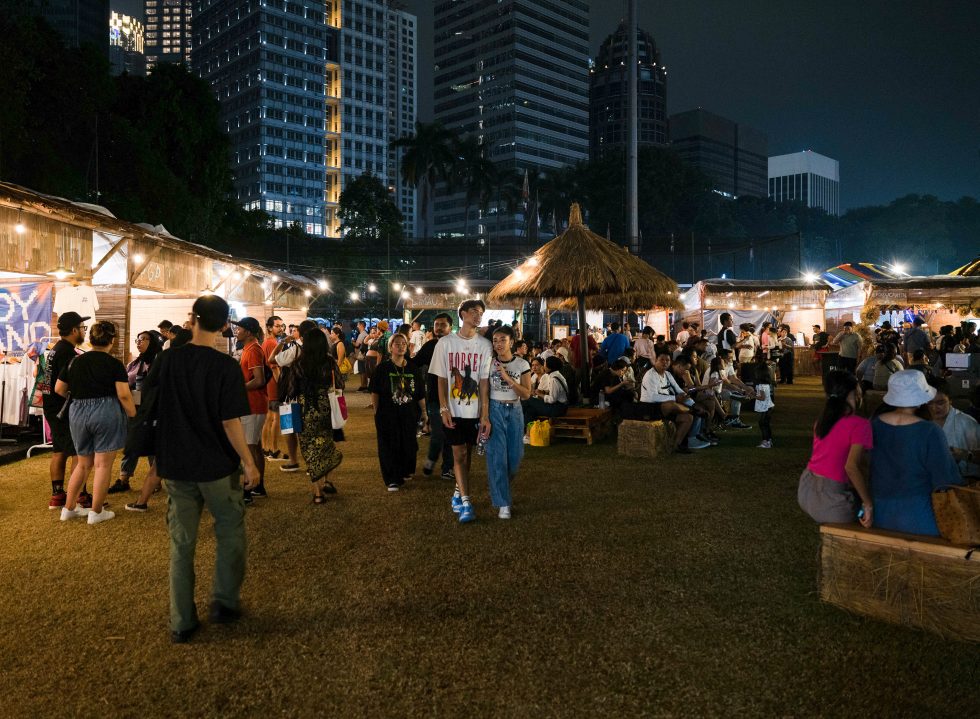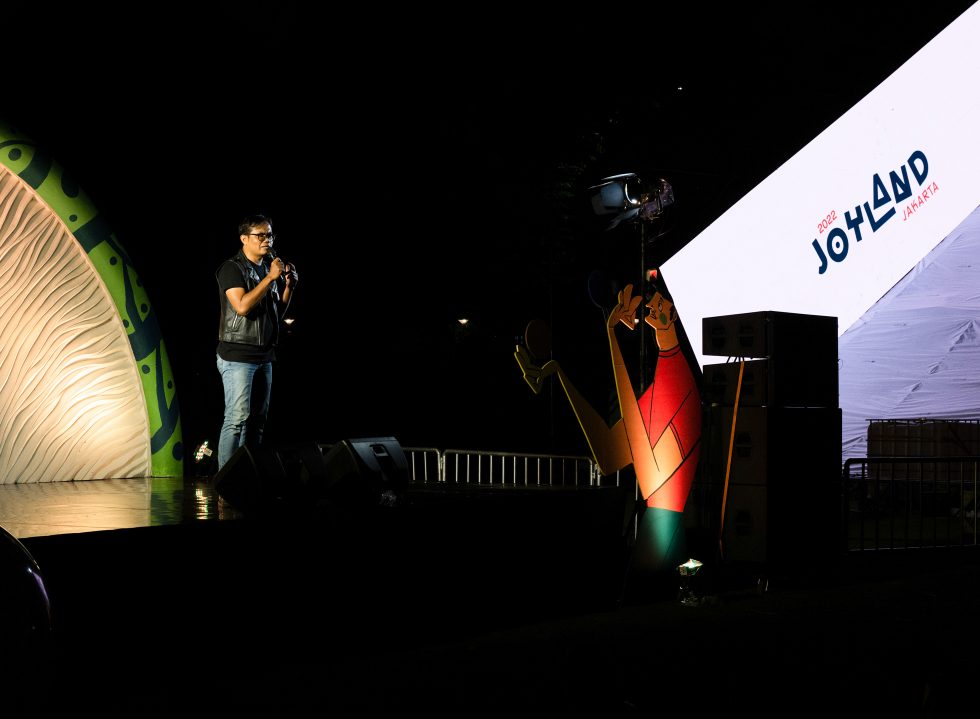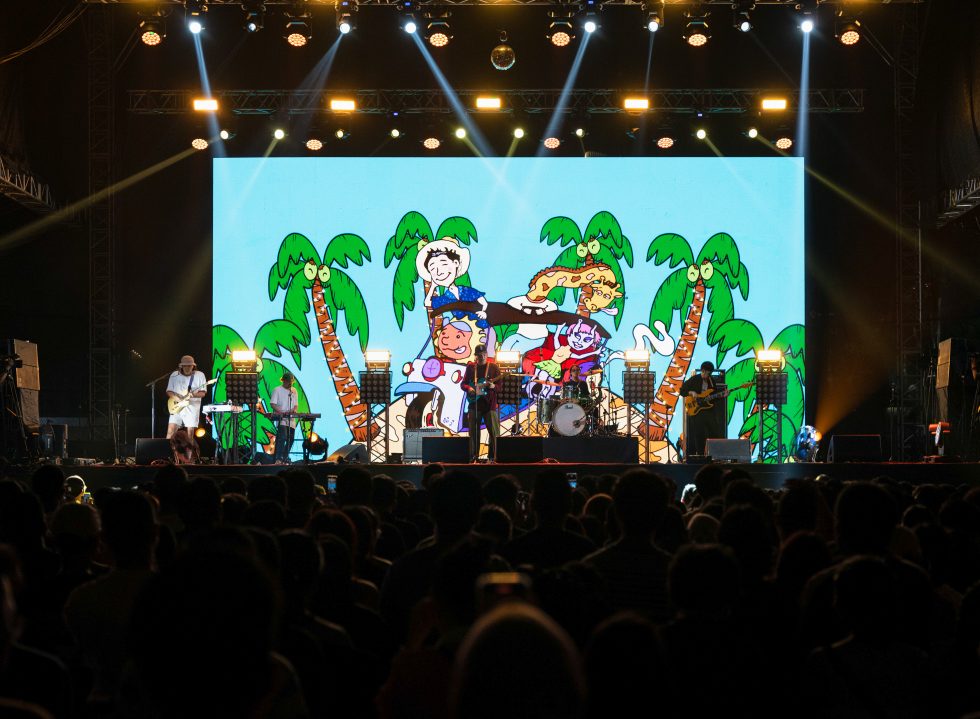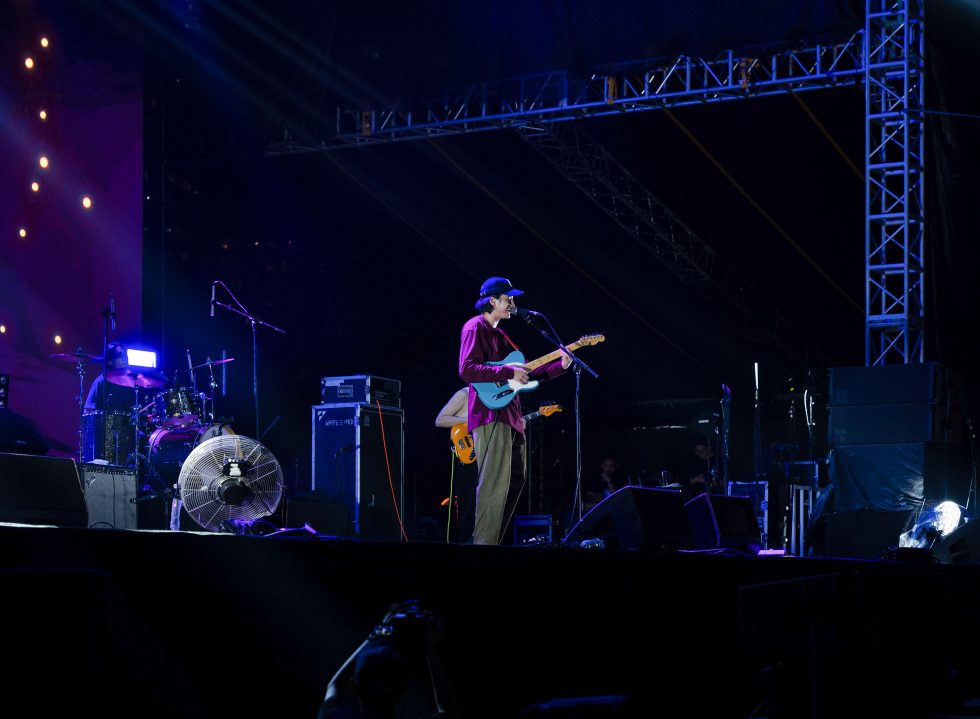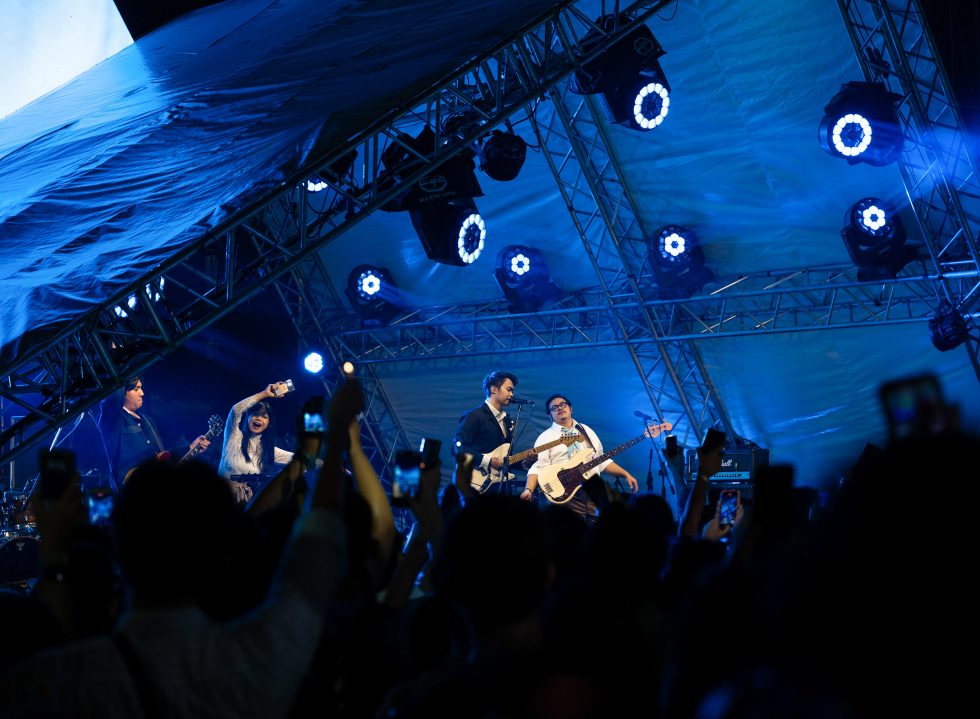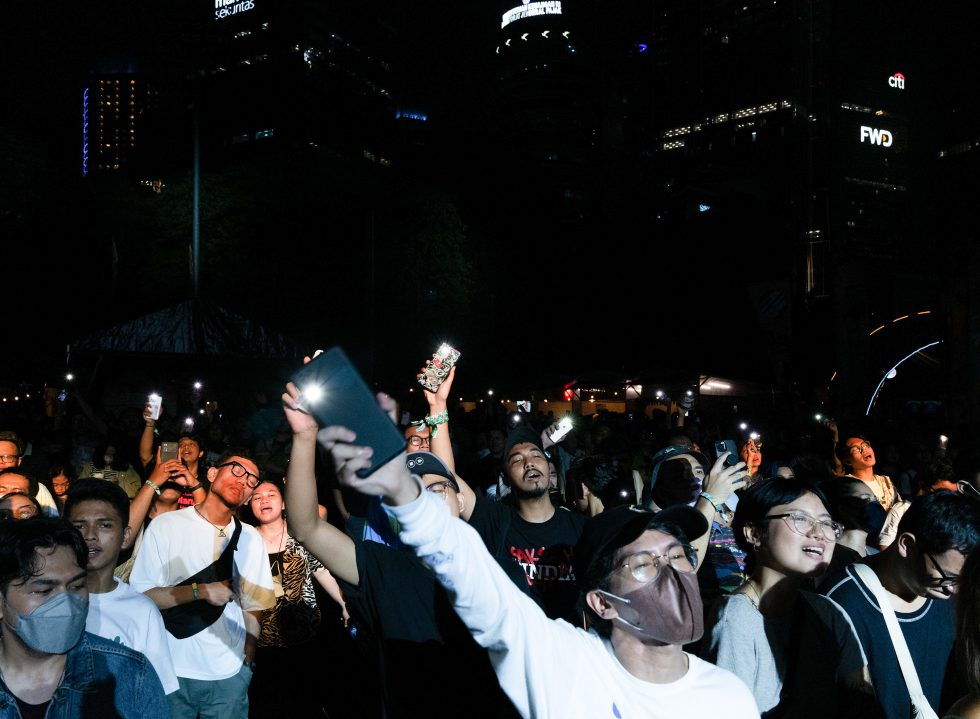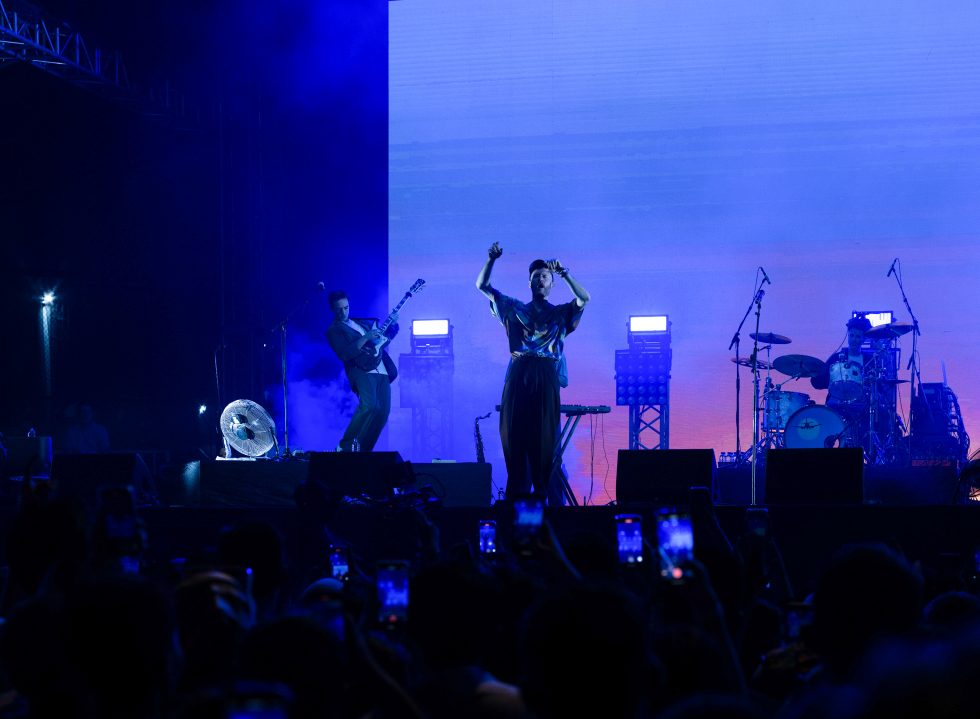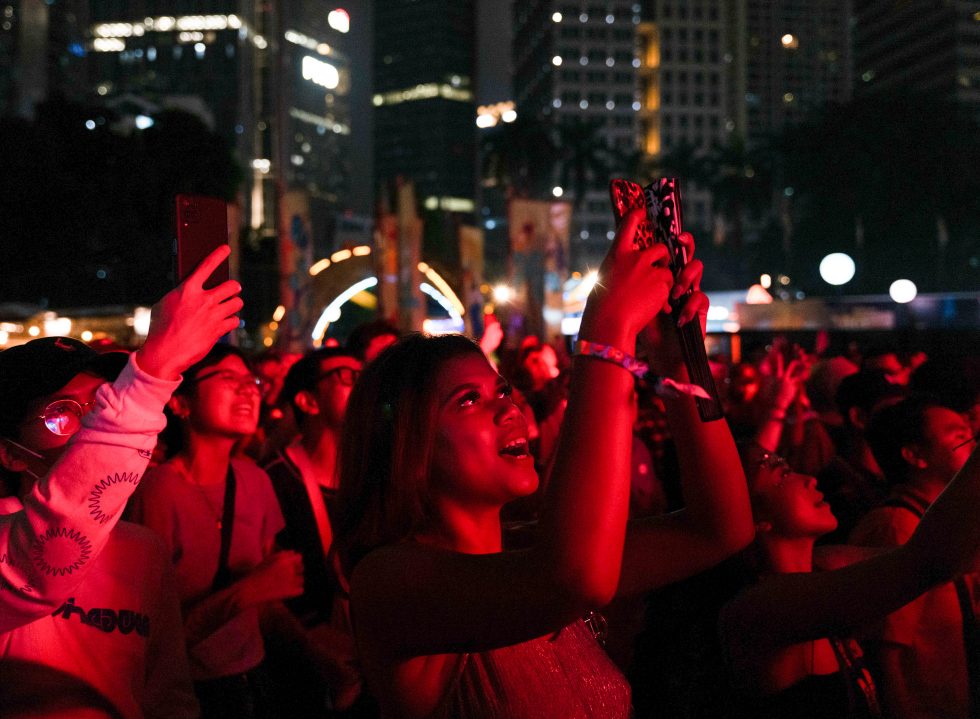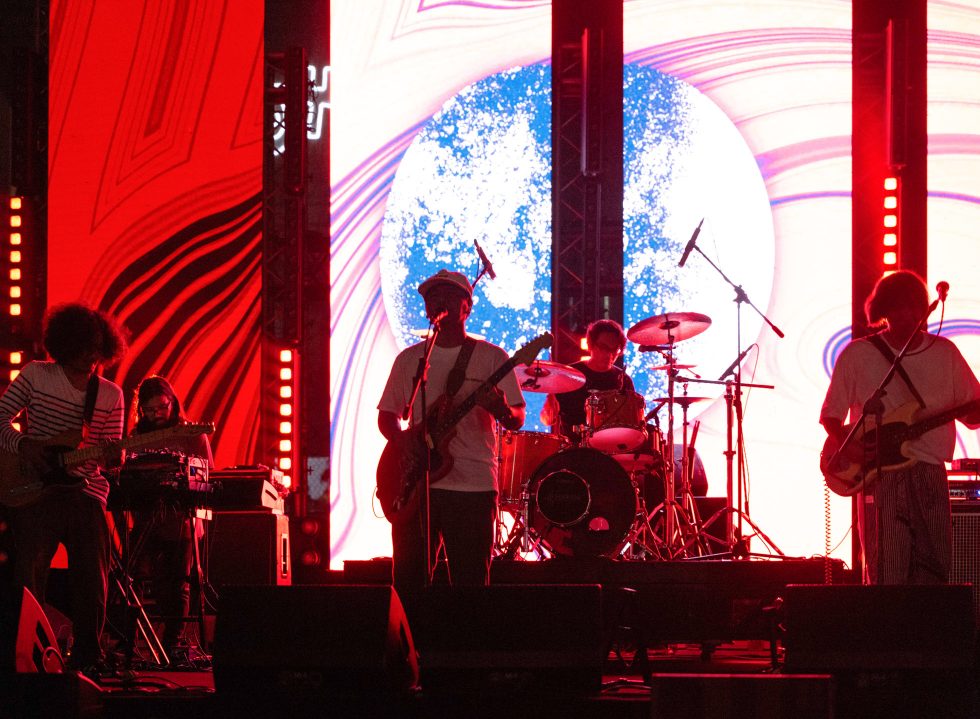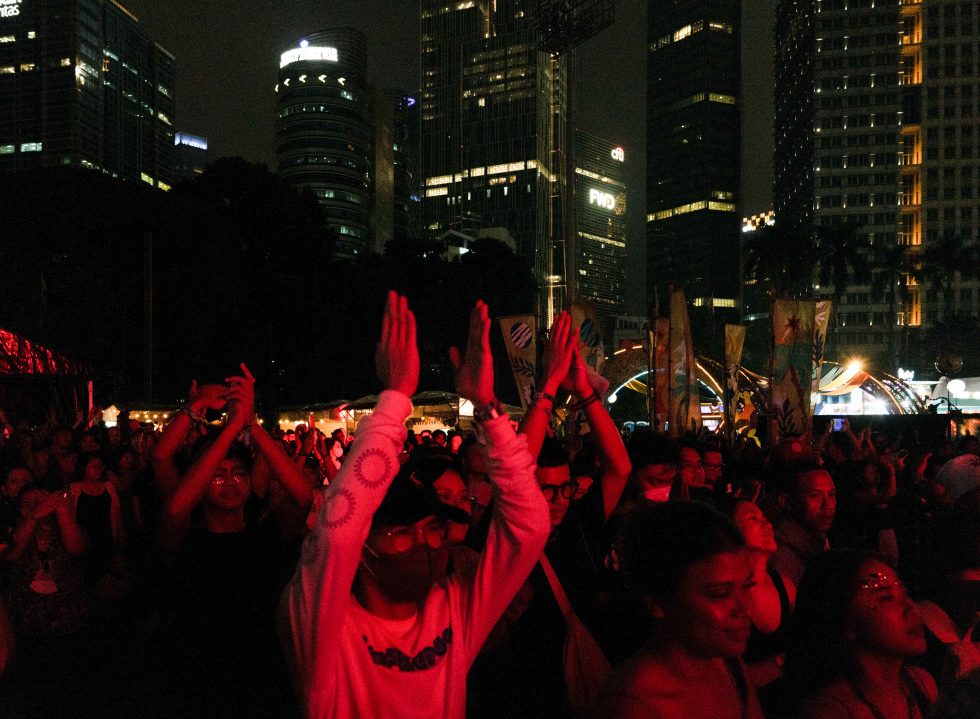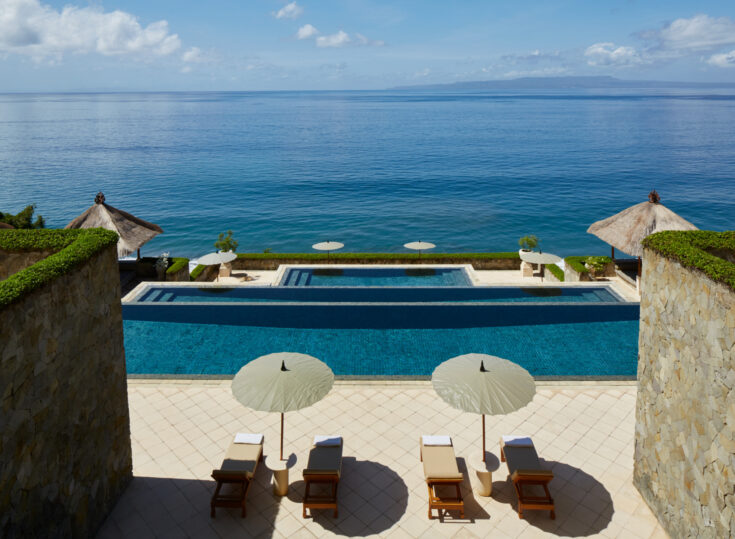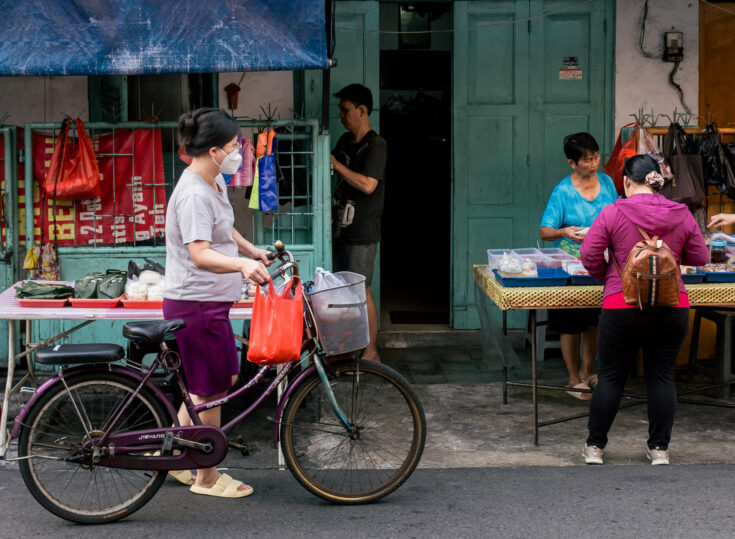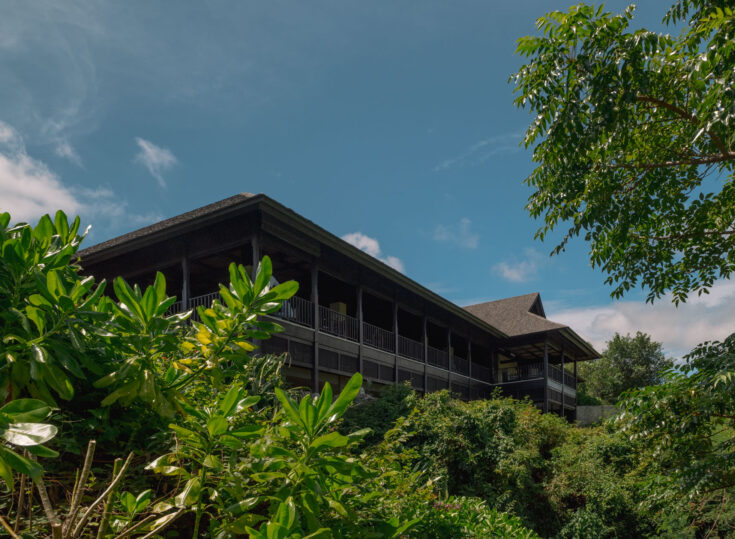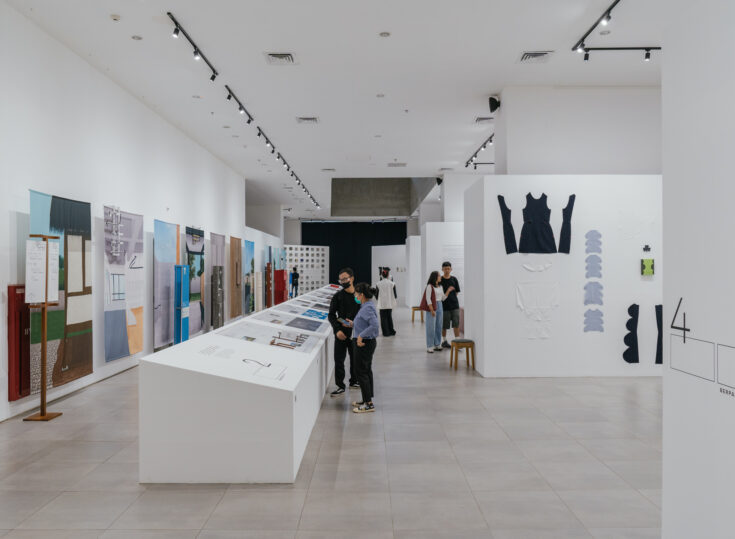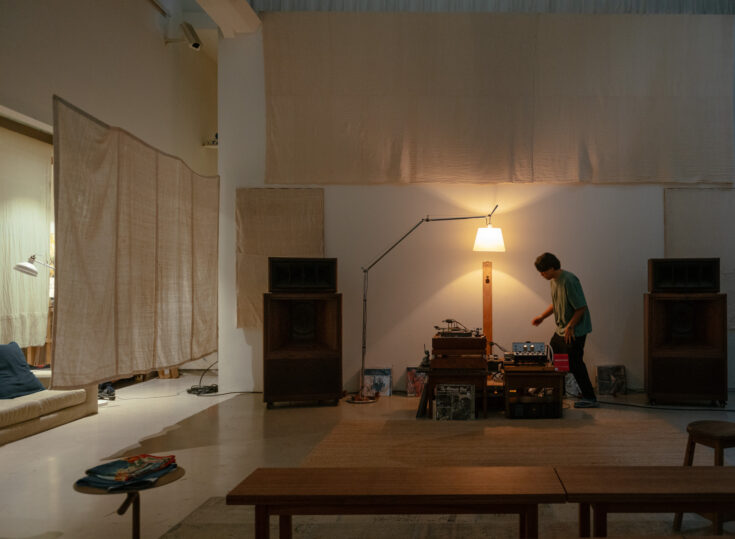From Friday to Sunday last week, over 15,000 festival-goers filled up Gelora Bung Karno’s softball stadium in anticipation of Joyland Festival. Returning for the second time this year following a successful stint in Bali, the three-day festival organised by Plainsong Live drew young people eager to catch their favourite musicians to festival first-timers discovering new music for a good time.
Joyland opened to an energetic start with a solo stage from British dance-pop act Years & Years, just before the unfortunate arrival of a thundering downpour that halted performances and had people scramming for cover. But the crowd wasn’t deterred—as soon as the rain let up, festival-goers covered in raincoats could be seen enjoying the sets in between running to find the next available shelter.
The gloomy start didn’t quite manage to cast a shadow over the rest of the festival. Despite the threat of rain, crowds continued to fill up the venue, with the number of attendees peaking on the last day. No doubt this was courtesy of the heavyweight headliners.
The experimental sounds of Japanese pop eccentric Cornelius, also known as Keigo Oyamada, brought together intricate layers of psychedelic rock and synth-fusion to a euphoric crowd; two-time-Grammy-winning bassist Thundercat, who rocked muay thai shorts and bedazzled hair clips, left audiences spellbound over every bass chops and licks as he sang about his cats; while Thai singer-songwriter Phum Viphurit’s summery indie-pop set compelled lovers to intertwine and sway to the beat; and husband-and-wife duo TENNIS impressed with their retro-pop infused tracks.
Across the weekend, the lineup also featured emerging acts from the likes of Crayola Eyes and Perunggu over at the Lily Pad Stage, while homegrown talents like Efek Rumah Kaca, Kunto Aji and RAN effortlessly brought together a crowd who would sing along to every word.
The family-friendly affair saw groups of friends dancing like nobody was watching, young families with kids—faces covered in paint resembling either a fairy, butterfly or a tiger—propped up on one parent’s shoulders (with ear protectors on), and couples sprawled on the grass sharing a picnic of gelatos, burgers and cup noodles.
With single-use plastic banned from the festival, visitors were encouraged to bring their own tumblers, an initiative that was further backed by the free water filling stations spread across the area. The attention to detail didn’t stop there. The festival decoration—from the cut-out wood with playfully-drawn murals and tenant huts made of hay from farmers in Karawang, Bitung and Bogor to intertwined bamboo gates—was purposefully designed with materials that can be reused.
The festival also offered much aside from music. The Shrooms Garden called on different comedians to take the stage for a short set of sharp-witted humour, teasing outbursts of laughter in-between lines. Opposite the main Joyland stage, there’s an outdoor film screening area, Cinerillaz, which focused on works by female directors curated by Kamila Andini.
Over at the White Peacock, which was persistently filled with children and those taking a break from the festivities of the event, there was a rotating schedule of creative activities, from acrylic painting, to talk shows and pottery sessions that does more than fill the time. Occasionally, the stage was also graced with performances, including singer-songwriter Rara Sekar, fondly known as hara, who managed to captivate the audience with a poetically-charged set despite sound checks blaring out in the background.
The intimate space meant that the stages were never far from one another. Within a five-minute walk, one can jump from listening to jazz and indie-pop to rock. Come nighttime, the atmosphere grew more relaxed as the backdrop of the city’s skyline got more pronounced and music seeped through the evening. It wasn’t until the end of Hindia’s closing set at midnight that reality set in: it’s Monday again.
